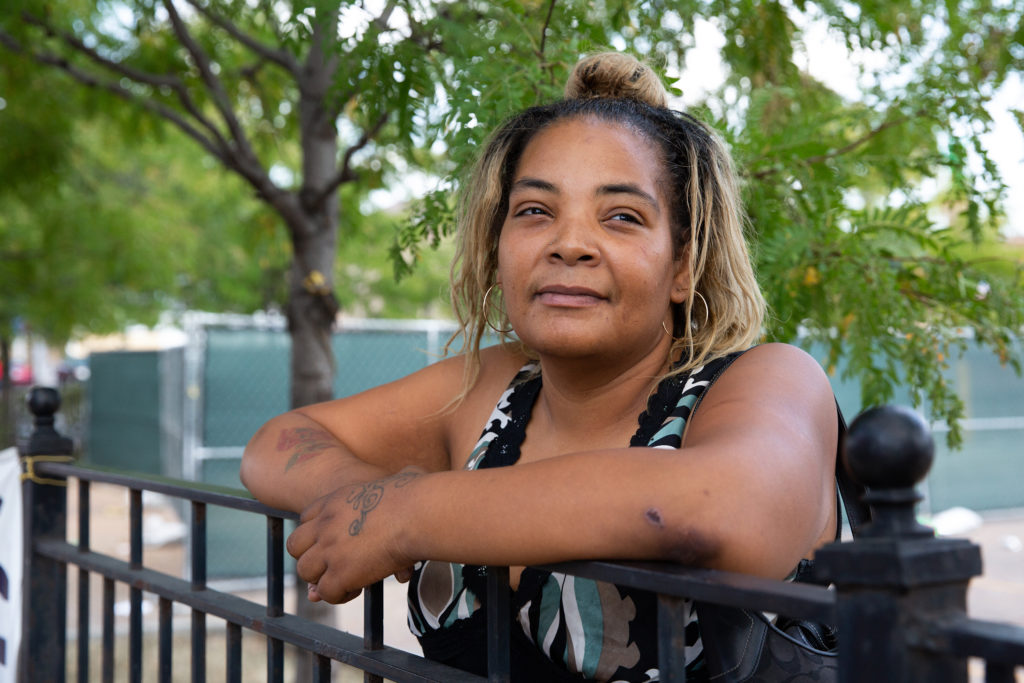If one factor marked the Hot Docs 2021 more than any previous live or online iteration, it was the weight of industry. On one hand, the festival’s decision to release all 220 selections at 9am on opening day of its second virtual edition was probably great for public audiences who could watch films at their leisure. On the other, it resulted in pure chaos from a publisher’s—my—perspective. Where the 10-day event usually allows an outlet to cover films as they screen throughout the festival, posting reviews and interviews as films premiere, this year’s format accelerated a sense of urgency for films to gain exposure right out of the gate. This sentiment, coupled with the fact that the festival had no digital screening access for media, aside from those fortunate to have an industry pass with access to the Doc Shop, from which we’re technically not supposed to review films, meant that every effort to cover a film brought an encounter with industry. (Note: Hot Docs facilitated connections and provided links whenever possible, which surely created a lot more work on their end than a virtual press library/platform would.) One can usually see every film one wants to see at a live edition of Hot Docs with a P&I pass, but online is not so easy.
The question of access makes it impossible to discuss Hot Docs 2021 without observing the effects of industry. Scrambling for links gave disproportionate levels of power to publicists and producers, who also seemed to be scrambling to create hype around their films when media were all moving at their own schedules, or generally covering the same 10-12 films handled by regular collaborators. For all the imperfections of Sundance’s attempt to mirror a live festival by using clearly laid-out schedules and viewing windows, the Park City event really allowed a film to “pop” in the way that it would following a live premiere. Moreover, a number of Hot Docs films and filmmakers, mostly the Sundance highlights, simply weren’t available even to those who asked. The first weekend of Hot Docs could have easily been confused with the first weekend of TIFF. The spirit of an online festival is very different from a live one, which proves frustrating since Hot Docs is usually the most easygoing, accessible, and enjoyable festival to cover in real life.

Best of the Fest
The films were generally very good at Hot Docs this year. Highlights included, but were not limited to, Margaret Byrne’s Any Given Day, which was my pick for best of the fest; Emily Kunstler and Sarah Kunstler’s Who We Are: A Chronicle of Racism in America Félix Dufour-Laperrière’s animated essay Archipelago René Sascha Johannsen’s rockumentary 7 Years of Lukas Graham Scott Gawlik’s refreshingly entertaining Set!; Shannon Walsh’s The Gig Is Up Elle-Máijá Tailfeathers’ Kímmapiiyipitssini: The Meaning of Empathy, and Reka Valerik’s worthy Mid-Length Feature winner Silent Voice. The festival also marked notable new Canadian voices in Jesse McCracken (Grey Roads) and Yasmine Mathurin (One of Ours) among the homegrown highlights.
Nearly every film I covered at Hot Docs, save for Silent Voice and audience award winner Dear Future Children, came via a link supplied by a publicist or a filmmaker who pitched it. This comment isn’t a slight on anyone who works tirelessly to get their films covered, but rather a point that digital festivals simply don’t allow for the same sense of discovery that live events provide. There’s a difference between casually discovering a film on a whim and negotiating interviews, embargo dates, capsule coverage, and a screening link in order to report on the films. On some level, I would like to see festivals ask filmmakers, sales reps, distributors, and publicists about a film’s need to participate if it is actively withheld from media and industry peers.
The Industry Conference
This observation isn’t so much a rant as it is a preamble to the festival’s industry programming. One year into the pandemic, it seems that festivals are still navigating the challenges of virtual events. Many filmmakers participating in the industry events wanted to discuss how festivals need to change and how the industry should learn from the tumultuous events of 2020, namely the COVID-19 pandemic, the racial reckoning that followed the murder of George Floyd, and the year-long closure of festivals and theatrical venues. Hot Docs clearly got the memo by filling nearly every panel with filmmakers from underrepresented communities and, notably, actually inviting them to discuss their work and process in lieu of general panels about diversity and inclusion. (A point that some panelists noted during conversations.)
The industry panels proved that some aspects of the online festivals are an advantage. Many speakers observed that virtual access provides more opportunities to attend international festivals since travel and lodging costs aren’t a concern. However, the online nature of the industry conference revealed the limitations of virtual festivals at the same time, as pre-recorded talks don’t offer the same experience, particularly after a year of Zoom fatigue. (I didn’t attend any of the virtual coffee breaks/cocktail hours so that I could step away from the computer and have a coffee or cocktail outside.) The pre-recorded nature of the panels also proved frustrating when many of the talks veered off topic, often falling into conversations about self-care and personal impact that have been recycled ad nausea during COVID—all worthwhile talking points, mind you, but not the focus of the intended discussions.

The “Economy of a Film Festival”
One particularly effective panel, however, was moderated by Lisa Valencia-Svensson, acting industry programs director at Hot Docs, with Carrie Lozano of the Sundance Documentary Program, and Orwa Nyrabia of IDFA, about the responsibility of documentary in the aftermath of 2020. This panel confronted the “economy of a film festival” and had pragmatic discussions about the commercial elements of an increasingly popular art form. “You have a product whether you like it or not,” observed Lozano, who stressed that she and other gatekeepers are learning how to be open-minded while hearing about how filmmakers fund their documentaries with hopes of balancing the artistic and commercial impulses. Nyrabia, similarly, observed the declining role of public broadcasters in documentary as the streamers and producers with budgets for theatrical docs shift the way films are made and consumed. However, he echoed Lozano by observing that the current state of documentary favours pluralism and that everyone wins when more voices shape our engagement with filmmaking.
Not quite hitting the mark was the panel I’d been most excited to attend, “From Doc to Narrative and Back Again.” Featuring Tiffany Hsiung (Sing Me a Lullaby) and Shasha Nakhai (Take Light), the conversation barely broached the topic of navigating drama and documentary and translating skill-sets between mediums. Tangents about self-care overwhelmed the conversation and exemplified the missed opportunity for pre-recorded panels: with a little overtime and some editing, the panel could have offered more substance. (As much as I love Hsiung and will always be eager to discuss her work, I don’t think everyone at the panel needed to hear about her new farmhouse in such detail.) However, when the panelists brought the conversation back on track, it actually proved quite insightful. Nakhai offered pragmatic views on being open to work-for-hire gigs via the DGC that help filmmakers earn a living and provide skills they can use in their passion projects. As for translating documentary to drama, Nakhai noted her experience while filming the upcoming adaptation Scarborough, saying, “You can’t fake reality unless you know what reality is.” Documentary is one route to that experience that also teaches empathetic qualities that complement the task of directing actors and larger teams.

Online Premieres
Online festivals were the topic of conversation in “Leveraging Your Online Premiere,” a panel that, frankly, every festival needs to hold moving forward and every filmmaker needs to attend. Moderated by Kathleen McInnis and featuring Crip Camp directors Jim Lebrecht and Nicole Newnham along with Landfall director Cecilia Aldarondo, the talk offered some helpful pointers. Admittedly, the conversation was somewhat undermined by the fact that Crip Camp had a massively successful live premiere at Sundance before the pandemic hit, as well as the support of Netflix and the Obamas’ Higher Ground—factors that few filmmakers can use to bolster an online premiere.
Nevertheless, the Crip Camp team conveyed that the online festival circuit is a different beast than Sundance. They argued that filmmakers need to be ready to pound the pavement unlike they ever have before, noting the challenges of securing coverage even during their Oscar campaign, which saw Lebrecht make history as a nominated director with physical disabilities. Lebrecht and Newnham spoke about using the increased accessibility of online festivals to their advantage, as they could bring many of their subjects, who have physical disabilities, into the campaign in ways that conventional festival events don’t allow. Aldarondo, whose Tribeca premiere was cancelled due to COVID, largely took the conversation in different directions, noting the power imbalances of festivals and the questions of access that don’t make a virtual event feasible. She cited her own subjects in Puerto Rico who have limited access to high-speed internet as one example among the challenges of gaining momentum while including doc subjects as part of the campaign. The conversation presented everyone in the industry with pressing questions that need urgent consideration as McInnis synthesized a lot of the off-topic digressions into learning points about who can pivot and how, which needs to be assessed if running an online campaign.
Live Events
The pros and cons of online premieres were evident in the live events among the industry programming. Hugely successful, for example, was the live Zoom concert by the rock group Fanny, the subjects of Fanny: The Right to Rock. The concert offered one of few moments that replicated the excitement of a live festival, and showed how one needs to maximize opportunities to make a film stand out in a crowded line-up. It’s likely no coincidence that Fanny became the Canadian audience favourite after the concert.
Similarly, Hot Docs brought two powerhouses together for an insightful talk as Tasha Hubbard guided a conversation with Elle-Máijá Tailfeathers about her festival selection Kímmapiiyipitssini: The Meaning of Empathy. The two filmmakers discussed responsible and ethical community-based filmmaking. Tailfeathers explained how her film about the response to the opioid crisis in her hometown in the Kainai First Nation was guided by hope and respect. Hubbard observed how buffalo appear in the film’s opening frames in lieu of the sensational images of first responders to death reports that would have provided a clichéd hook, illustrating a point raised in other panels that people with different lived experiences will notice elements of a film that others might overlook. Tailfeathers’ emphasized the film’s scope and breadth, noting that it was important to feature a variety of characters because no one person should represent a community and that stories do not just belong to an individual. The director also emphasized the role for Indigenous creators in the film, as production guidelines meant that some key crew members were settlers having been contracted on the basis of geography; however, Tailfeathers furthered her community-centric approach by filling training positions and second-hand roles with Indigenous talents to build capacity.
Challenges of online premieres were more evident in the festival’s closing keynote featuring Ahmir “Questlove” Thompson in conversation with NOW’s Radheyan Simonpillai about the hit doc Summer of Soul (…Or When the Revolution Could Not Be Televised). Despite being a marquee event with over 200 delegates registered, the attendance for the live stream hovered around 40 guests, at some point dropping to nearly 20 people despite the strength of the conversation. The limited attendance could have been attributed to the fact that Summer of Soul was among the docs that were not available for industry delegates, unless they coughed up for a ticket on top of their pass. Many attendees probably didn’t get what they should have out of the substantial conversation, which unpacked the film’s contribution to musical history, but also the doc’s deeper significance about the erasure of that history. Leveraging an online premiere means engaging audiences with the film, but people can only get so excited about a film they haven’t seen.
The Power of a Good Campaign
A strong conversation about energizing audiences, however, could be found in the panel “This Was My Oscar Campaign.” Moderated by publicist David Magdael and featuring the St. Louis Superman team of directors Smriti Mundhra and Sami Khan and producer Poh Si Teng, the panelists discussed the Academy Award nominated short doc that the effort that got them there. The team relayed the genesis of the film, which profiled Ferguson activist Bruce Franks, Jr. as he made the jump to elected office, and shared the origin story of the campaign. In short, the plan to make a run for the Oscars began with a win at the Oscar-qualifying Big Sky Documentary Film Festival and a decision to go for gold.
Teng stressed that winning an Oscar is a great reward, but the campaign itself is a tremendous opportunity for documentary filmmakers to give their subjects a platform and use award season events for conversation starters to discuss important matters. Like the Crip Camp team, Superman’s crew included their subjects whenever possible and Mundhra noted that one of the campaign’s best rewards was giving Franks a platform to engage with audiences and transform film screenings into teachable moments. Khan also spoke to the team’s impulse to pursue Franks so doggedly for the production and translating that experience of being an outsider into part of the campaign. Audiences and industry peers could see the relationship between filmmaker and subject and understand the empathetic lens with which they made the doc. “As much as you think awards don’t matter, they do and they can change your career,” admitted Khan, who has gone on to debut the feature doc The Last Out. Teng closed the conversation by encouraging participants to identify what they’re not willing to compromise while running a campaign, as the documentary crowd is ultimately voting for the films and needs to understand the relationship between the storytellers and the participants.
This panel also demonstrated the benefits of having a clear and focused campaign whether running a project through live or virtual festivals. Of all the pre-recorded panels during the industry conference, this was perhaps the only one I attended that kept the conversation on topic and saw considerable engagement between the moderator and the participants. The team displayed the experience of talking through their film together with filmmakers and audiences. They had their “story” down pat, knew all the talking points, and yet didn’t feel scripted. Instead, they conveyed the passion that was clear for those of us who had the chance to encounter the St. Louis Superman team during the Oscar campaign, which proved a very refreshing point: even in virtual festivals, passion endures.












